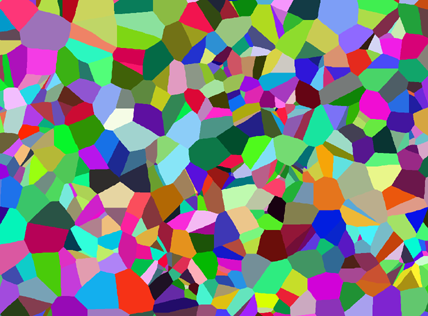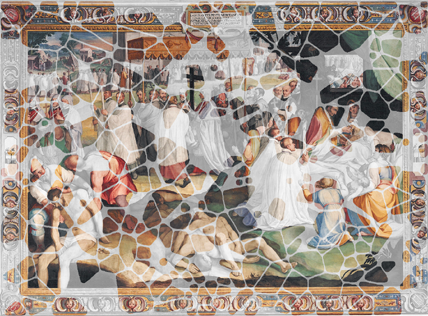This dataset was originally created for DAFNE, an international challenge concerned with collecting outstanding contributions to the field of Anastylosis, whose submissions closed in July 2019. The goal was to develop tools enabling digital reconstruction of heavily damaged frescoes, supporting their restoration through the solution of the ‘puzzles’ formed by the remaining fragments, often mixed with spurious elements.
The winners of the challenge presented their results and have been awarded during the 20th International Conference on Image Analysis and Processing (ICIAP 2019) held in Trento, Italy, from 9th to 13th September 2019. The proposed algorithms have been published, after a peer review, in a dedicated Virtual Special Issue of Pattern Recognition Letters on Digital Anastylosis of Frescoes challeNgE (DAFNE) (Elsevier journal).
The dataset is now publicly available, but its use is restricted to research, education and non-commercial purposes.
If you make use of DAFNE dataset, please cite: Piercarlo Dondi, Luca Lombardi, Alessandra Setti (2020), DAFNE: a dataset of fresco fragments for digital anastlylosis, Pattern Recognition Letters, 138 (2020), pp. 631-637, Elsevier, DOI:10.1016/j.patrec.2020.09.015.
The dataset has been built applying simulated fragmentation to famous frescoes’ images. For each fresco you will find: an image of the original fresco and 18 folders, each one containing:
Example of plane tessellation and ground truth (original image in grey background, with overlapping coloured fragments) for "Cesare Nebbia - The Plague of Milan, 1604"


The dataset was designed to be realistic, natural and challenging for cultural heritage domains, in terms of image resolution, diversity in scenes, and pictorial assets. The fragments were obtained, from each fresco, through a random plane tessellation with suitable statistics (uniform or with a few clusters as shown in the DAFNE Annex), with an erosion process applied to each fragment.
The data distinguishing characteristics are quantized by the following five basic parameters:
The dataset was originally divided in two parts: DB1, provided with all the solutions, to be used as training set for the development phase; and DB2, with no solutions, to be used for the testing challenge phase. Now, the solutions for DB2 (i.e., the exact coordinates and orientation of each fragments, the list of spurious ones, and the reconstructed image) are also provided.
For download, please visit the DAFNE dataset download page. For additional information, send an email to daf-challenge-group@unipv.it. You will receive a reply as soon as possible.